Heterodontosauridae
- Primitive ornithischians not closely related to any other group
- Small size (<2m)
- Bipedal, with long tail
- Unique chewing teeth and canine-like fangs
- At least one species had filamentous (hair-like) fibers
- Probably herbivorous
| 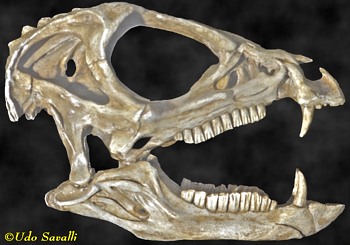
Heterodontosaurus Skull, Early Jurassic Period, South Africa (SGDDS*)
|
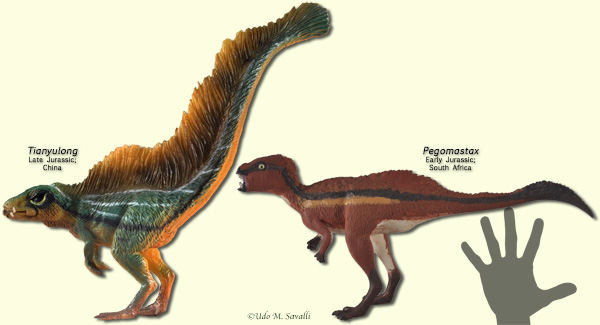
View Larger Image
|
|
Thyreophora
- Armored dinosaurs
- Have rows of osteoderms (dermal armor) along neck, back & tail
- Mostly quadrupedal
- All are herbivorous, with shearing dentition
- All are relatively small-brained
|
Basal Thyreophorans
- Most primitive of the Thyreophorans
- Armor plates are small and do not connect or form spikes
- Hind limbs longer than forelimbs: probably partially bipedal
| 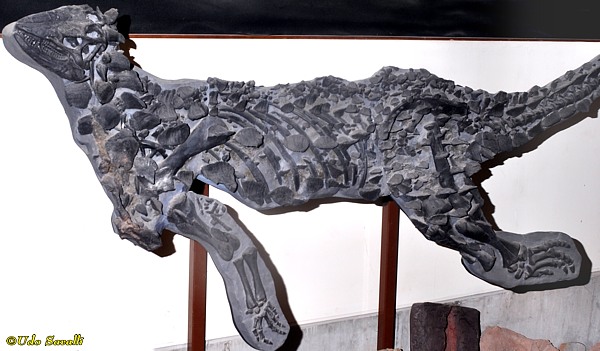
Scelidosaurus fossil cast, Early Jurassic Period, England (SGDDS1)
|
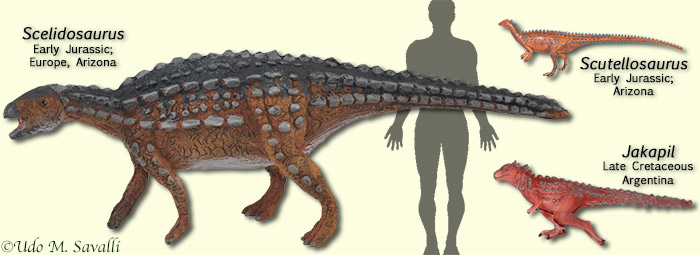
View Larger Image
|
Stegosauria
- 2 rows of enlarged dorsal osteoderms that form vertical plates or spikes
- 4 spikes at end of tail ("thagomizer")
- Head very small
- Forelegs shorter than hindlegs
| 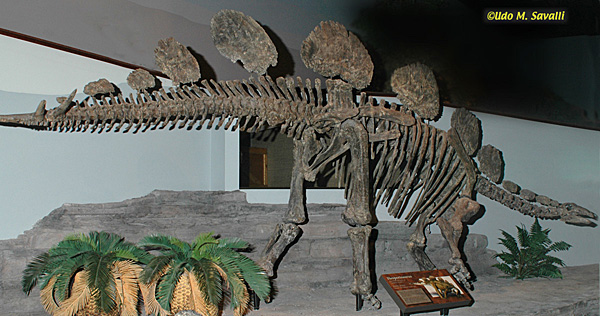
Hesperosaurus skeleton, Late Jurassic, North America (MoAL)
|
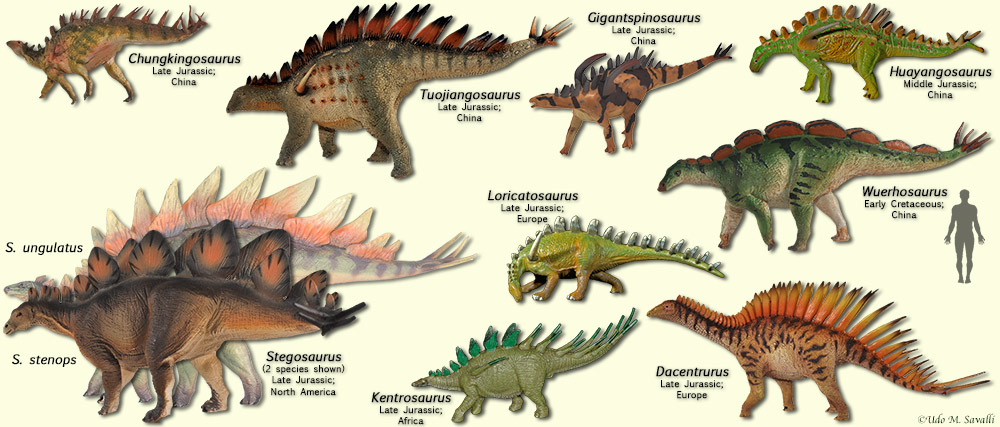
View Larger Image
Our Changing View of Dinosaurs: Stegosaurus
See lab manual Exercise 16 for more information

View Larger Image
|
|
Ankylosauria
- Osteoderms form a nearly contiguous dorsal shell-like covering
- Body very wide and low to the ground
- Many have laterally-projecting spikes
| 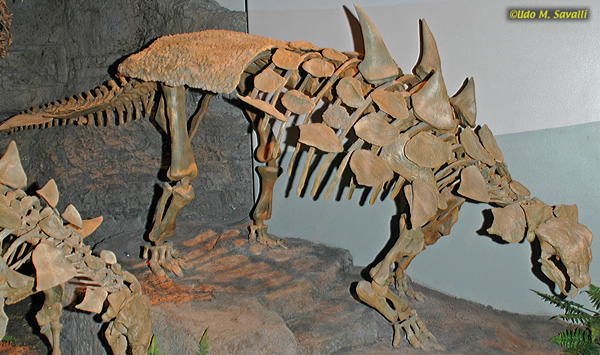
Gastonia skeleton, Early Cretaceous, North America (MoAL)
|
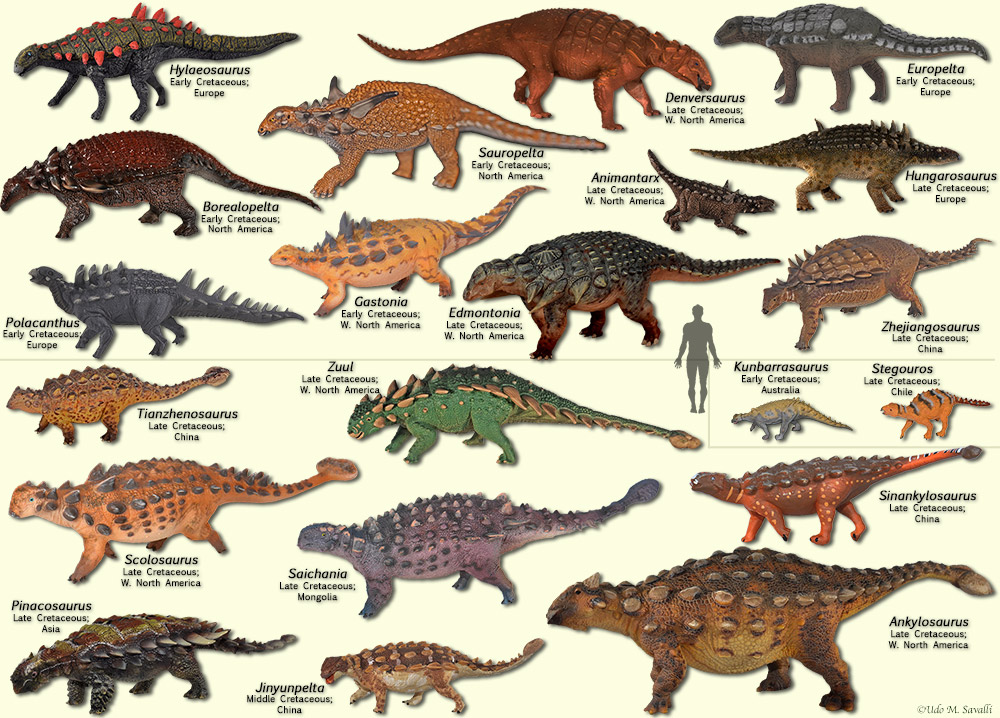
View Larger Image
The Evolution of Thyreophoran Tail Weaponry
See lab manual Exercise 16 for more information
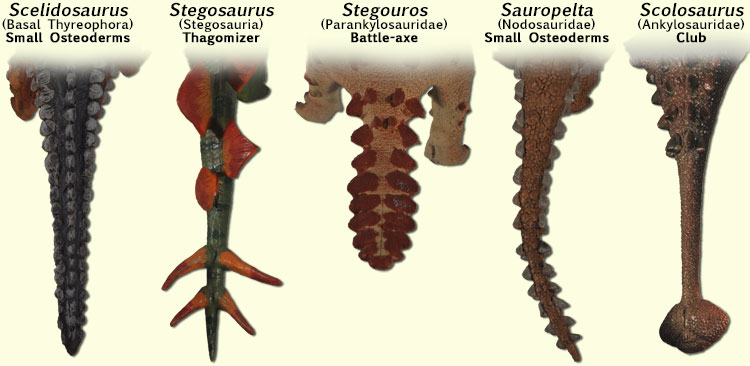
View Larger Image
|
|
|
Marginocephalia
- Back of skull with bone ridge or frill
- Herbivorous
- Known only from Northern Hemisphere from late Jurassic to Cretaceous
|
Pachycephalosauria
- Dome-headed (or bone-headed) dinosaurs
- Top of skull is greatly thickened (may be flat or dome-shaped)
- Skull usually has various knobs or spikes
- Bipedal
- Snout ends in broad beak
| 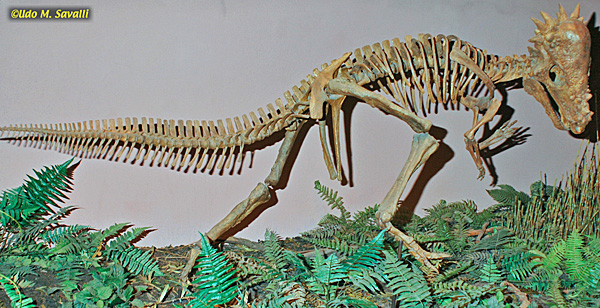
Pachycephalosaurus skeleton, Late Cretaceous, North America (MoAL)
|

View Larger Image
Recognizing Species: Pachycephalosaurus
See lab manual Exercise 16 for more information
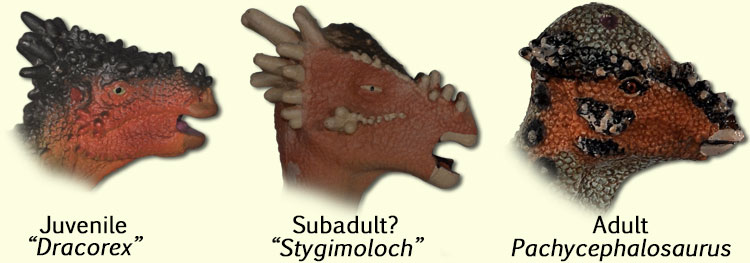
View Larger Image
|
|
Ceratopsia
- Horned dinosaurs (though not all have horns)
- Narrow snout with parrot-like beak (and a unique bone at tip of upper jaw)
- Projecting bones at side of skull near cheek
- Most have enlarged bone frill extending from back of skull
|
Basal Ceratopsians
- Primitive members of the group near base of family tree
- Generally lack horns
- May be bipedal or quadrupedal
- Generally smaller than the more derived forms
| 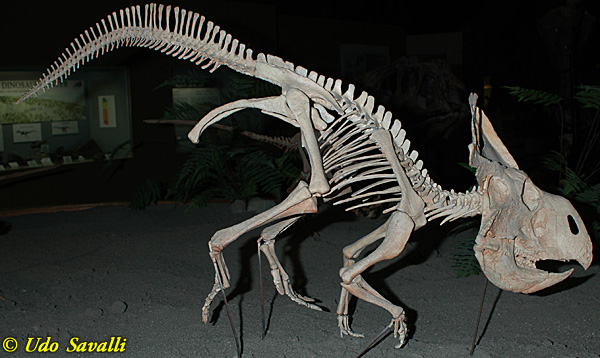
Protoceratops skeleton, Late Cretaceous, Mongolia (WDC2)
|

View Larger Image
|
Ceratopsidae
- Advanced, derived species
- Nearly all have some horns on head, especially on nose and above eyes
- Frills are large and well developed
- Dental batteries indicate chewing ability
- All are quadrupedal
- Generally large-sized
| 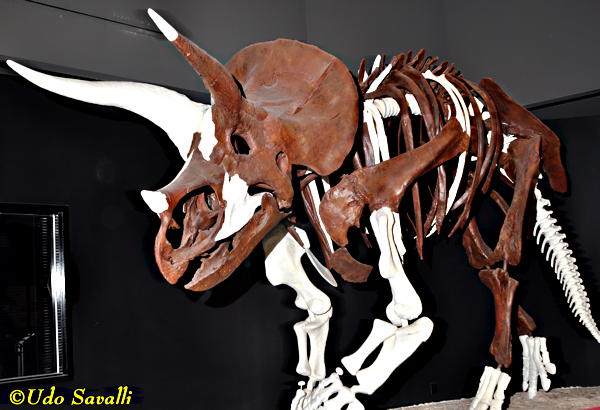
Skeleton of "Yoshi's Trike," an unnamed species of Triceratops; Late Cretaceous, Montana (MOR)
|
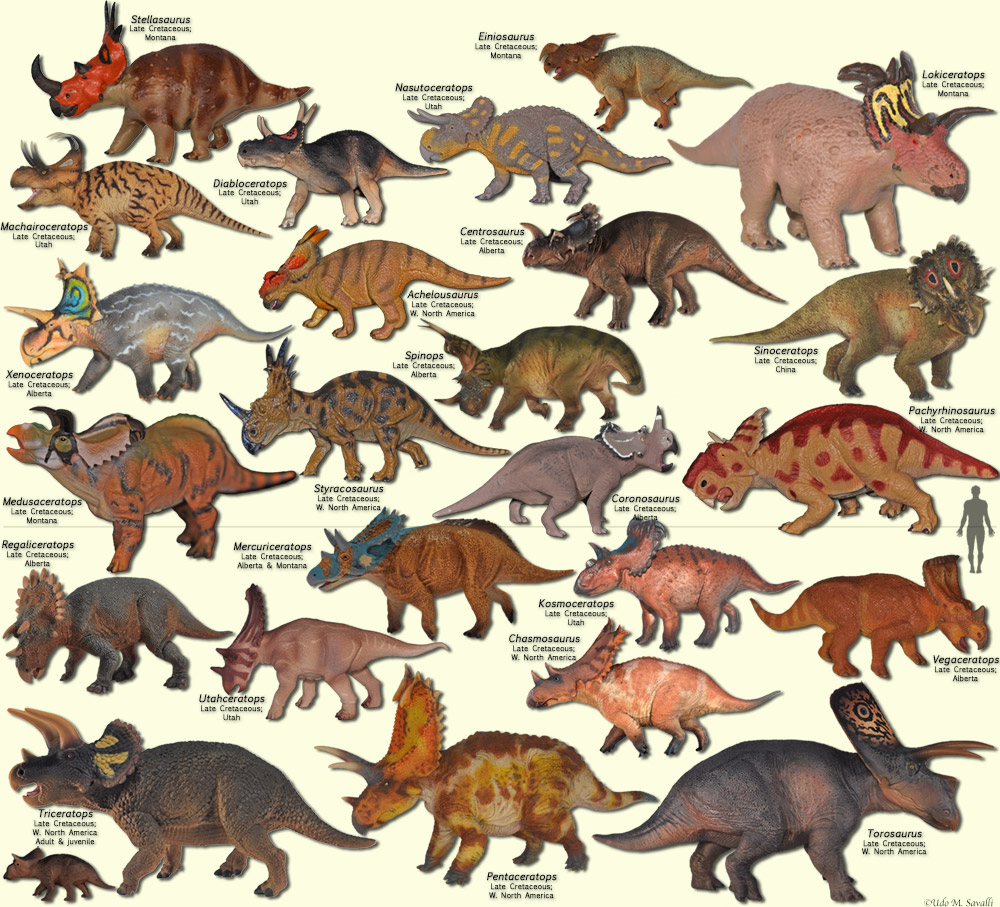
View Larger Image
Anagenesis: Evolution in a Single Lineage
See lab manual Exercise 15 for more information
Centrosaurine Ceratopsians:

View Larger Image
Triceratops species:
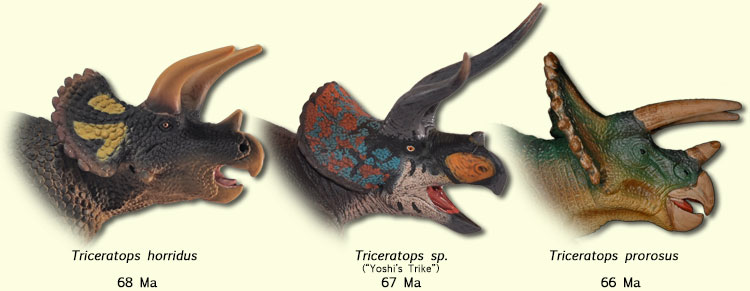
View Larger Image
|
Dinosaur Growth & Development: Triceratops
See lab manual Exercise 15 for more information

View Larger Image
|
|
|
Ornithopoda
- Beaked Dinosaurs
- Relatively unspecialized body form without armor or weapons
- Hind legs longer than front legs
- Bipedal or semiquadrupedal
- Ossified tendons stiffened large tail
- Herbivorous; most chopped or chewed their food
|
Hypsilophodontids & Basal Neornithischians
- This is a paraphyletic grouping of generally similar, small, agile, fast-running, bipedal ornithischians
- Hypsilophodontids are basal Ornithopods
- Others here are Neornithischians (the clade that includes both Ornithopods and Marginocephalians), mostly branching near the base of that group
| 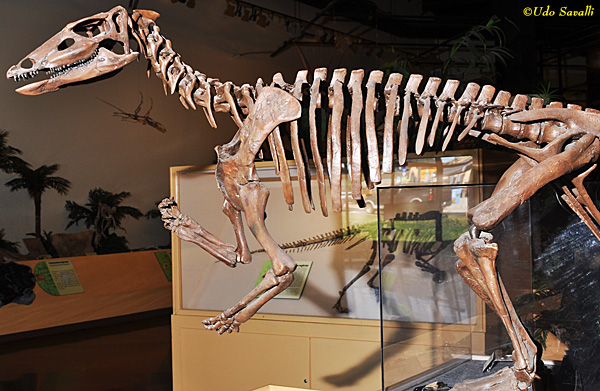
Thescelosaurus skeleton, Late Cretaceous, North America (RMDRC)
|
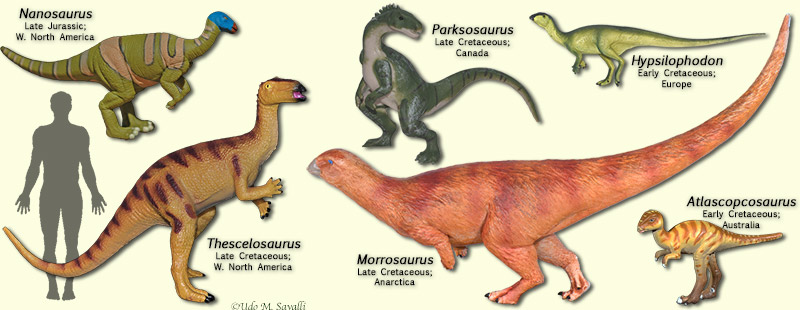
View Larger Image
|
Iguanodontia
- Paraphyletic grouping of species intermediate
between Hypsilophodonts and Hadrosaurids
- Moderate to large size
- Moved both bipedally and quadrupedally
- Necks relatively long
- Generally lacked any head ornamentation
- Some had enlarged thumb spikes
| 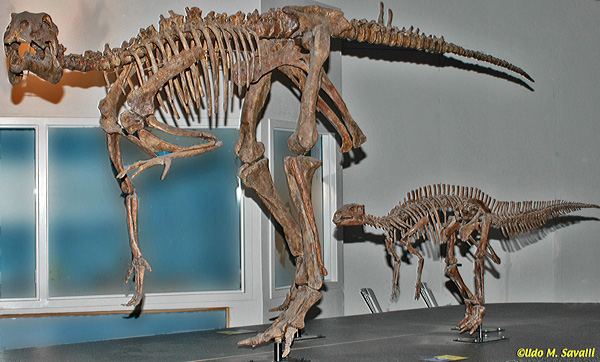
Probactrosaurus adult & juvenile skeletons, Early Cretaceous, China (AMNH3)
|
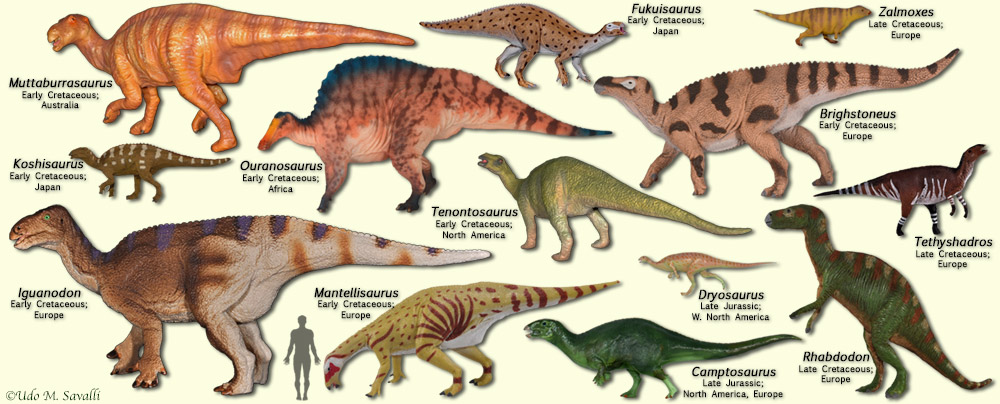
View Larger Image
Our Changing View of Dinosaurs: Iguanodon
See lab manual Exercise 16 for more information

View Larger Image
|
|
Hadrosauridae
- "Duck-billed Dinosaurs"
- Large size
- Mostly quadrupedal (but may have run on hind legs)
- Mouth generally broad and flat
- Had well-developed dental batteries for efficient chewing
- Many with distinctive head crests
- Uncrested forms may have had inflatable nasal sacs
| 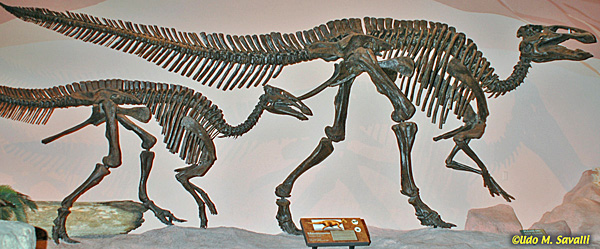
Edmontosaurus skeletons, Late Cretaceous, North America (MoAL)
|
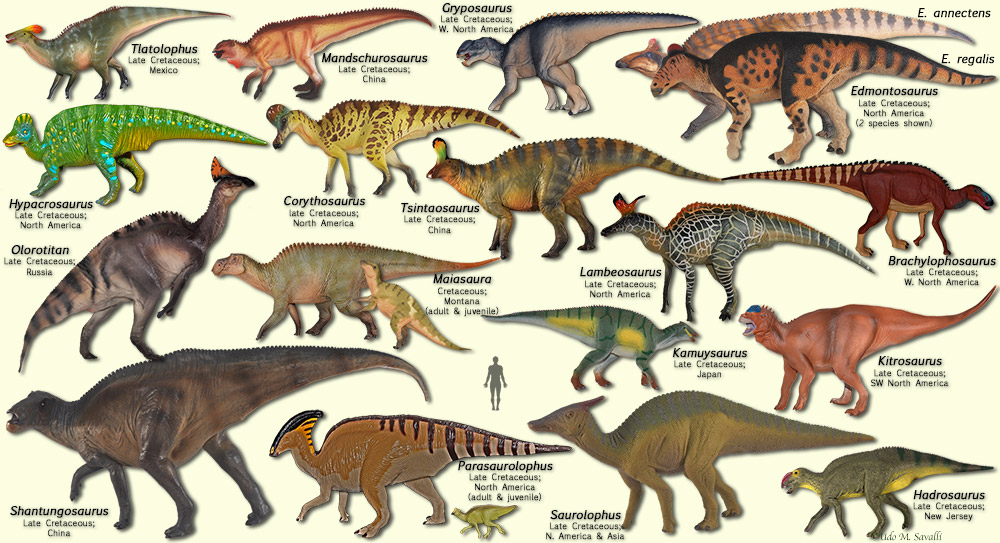
View Larger Image
Our Changing View of Dinosaurs: Hadrosaurus
See lab manual Exercise 16 for more information

View Larger Image
|
|
|
|
* Museum Abbreviations:
MoAL = Museum of Ancient Life, Lehi, UT
WDC = Wyoming Dinosaur Center, Thermopolis
AMNH = Arizona Museum of Natural History, Mesa
FMNH = Fernbank Museum of Natural History, GA
MOR = Museum of the Rockies, Bozeman, MT
SGDDS = St. George Dinosaur Discovery Site, UT
RMDRC = Rocky Mountain Dinosaur Resource Center, CO
|
|































